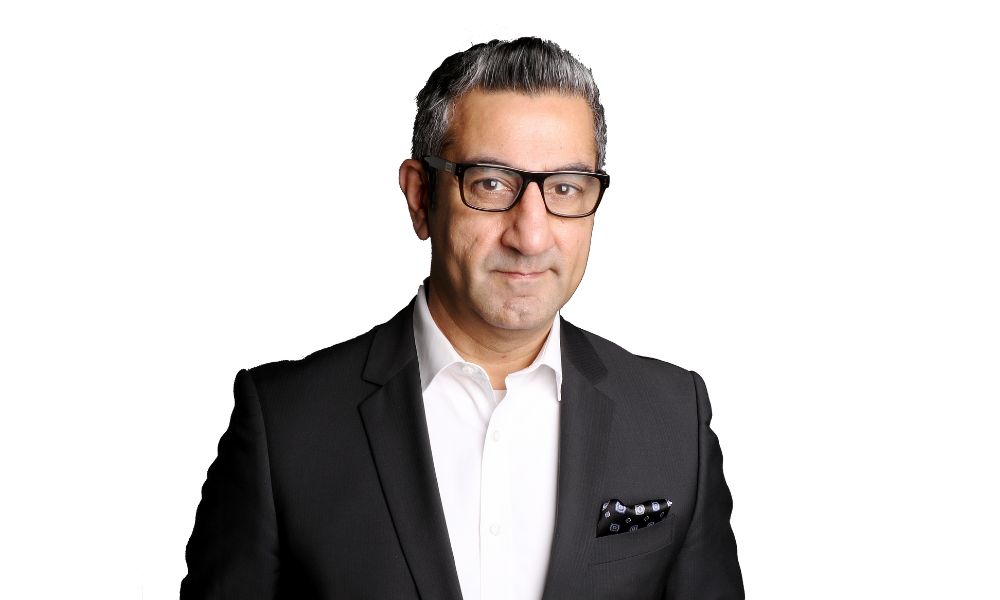"Fixed income should be the go-to, but maybe it's not. Maybe it's more gold," says BMO GAM CIO

What is often considered a “safe haven” due to its lack of correlation with returns on stock and in a market where volatility has become the rule rather than the exception, gold has emerged as an unlikely stalwart.
The yellow metal also looks to keep climbing. This past March, gold prices surpassed the $3,000-per-ounce mark for the first time ever. They're currently sitting around $3,300 per ounce and still climbing.
This begs the question: what’s driving the appeal, particularly for pension portfolios? Sadiq Adatia, CIO at BMO Global Asset Management attributes gold's rise in popularity to a breakdown in the traditional role of fixed income as a hedge against equity market volatility.
He explains that the extreme swings in interest rates, from zero to rapid hikes and now easing again, and have rendered bonds less reliable, causing institutional investors to seek out alternative assets.
“Because fixed income hasn’t done what it’s supposed to do, people have reverted to something else that they feel is a better hedge. It’s hard for fixed income to do what it’s supposed to when you have such big shocks in interest rates,” he said, adding that in 2022, many investors who depended on bonds for downside protection were blindsided.
“Portfolios were down double digits, but you were expecting your bond portfolio to anchor that and that didn’t happen,” he said.
Gold, on the other hand, stepped in as an effective shield because it wasn’t tethered to interest rate fluctuations and responded more directly to macro uncertainty. Adatia points to a growing nervousness about global issues, ranging from geopolitics to tariffs, that’s been mainly fueling this trend. This has only caused gold’s momentum to continue climbing.
Adatia sees a clear role for gold in pension portfolios, especially as part of a broader commodities allocation aimed at defensive positioning. For pensions, which naturally operate with long investment horizons, a measure of stability is essential. Gold can contribute meaningfully to that safety.
Whereas traditionally, fixed income would be the first choice for this type of protection, he believes recent conditions have prompted a rethink.
“Fixed income should be the go-to, but maybe it’s not. Maybe it’s more gold,” he said.
One often-overlooked driver, according to Adatia, is sovereign wealth funds. These large-scale institutional buyers have been quietly amassing gold to diversify and become less reliant on the US dollar, he said. This wave of demand has added to the metal’s momentum, reshaping how gold is viewed across investment portfolios.
“They're not buying small doses, they're buying big amounts, and they've been buying it consistently over the last few years,” he noted. “As you add all those in, the demand for gold prices have just gone through through the roof.”
Still, Adatia emphasized tariffs and broader geopolitical risks are major catalysts behind the sustained appetite for gold, particularly as institutional investors face uncertainty on multiple fronts, pointing to inflation fears and unpredictable policy shifts. The question then becomes how to best play out the environment, Adatia said.
“People are trying to figure out, ‘How do I play this? Do I sit in cash? What do I do? Gold becomes that hedge plate for people,” he added.
Though BMO GAM’s initial investment in gold - since 2023 - predated some of these political developments, the reasoning and allocation has evolved, noted Adatia, acknowledging that it was tied more to better hedge against uncertainty. That view has only expanded as new risks emerged.
“We needed something better than fixed income. We took money out of fixed and moved that into gold and the outperformance has been like 60 per cent,” he said.
Adatia ultimately believes gold stands apart from other defensive strategies due to its fundamental independence from equity market dynamics. Unlike assets that move in tandem with broader market shifts, gold’s value is tied solely to the underlying commodity, making it uniquely non-correlated.
He contrasts this with strategies like “low-volatility names or smart alpha strategies”, which aim to reduce risk but still rely on market performance. For investors who are cautious but still want market exposure, such strategies may suffice.
“If you’re in-between, or you feel a little bit overvalued, you still want to have some defensive there,” he said.
Adatia does acknowledge that there are trade-offs, however. While it offers strong defensive qualities, it’s not without risks. Notably, if uncertainty subsides, markets get very optimistic or the Fed decides to cut rates. That could cause gold to underperform “by quite a bit,” he said.
He cautions that investors must be clear about why gold is in their portfolio. If it’s there as a hedge, then underperformance during optimistic market phases shouldn't be a concern. Too often, investors exit gold prematurely, only to find themselves exposed when volatility returns.
“They move out of it for the wrong reasons… and when uncertainty pops up, now they don’t have the protection anymore,” he added.
Despite recent research that casts doubt on the reliability of gold to serve as a safe haven, and could reach a singularity condition in 2029, Adatia believes gold has proven itself. Over the past six months, gold has increased “well over 20 per cent while everything else was down,” he said.
“That tells me it's the perfect way to hedge things off. It’s been tested time and time again.”



